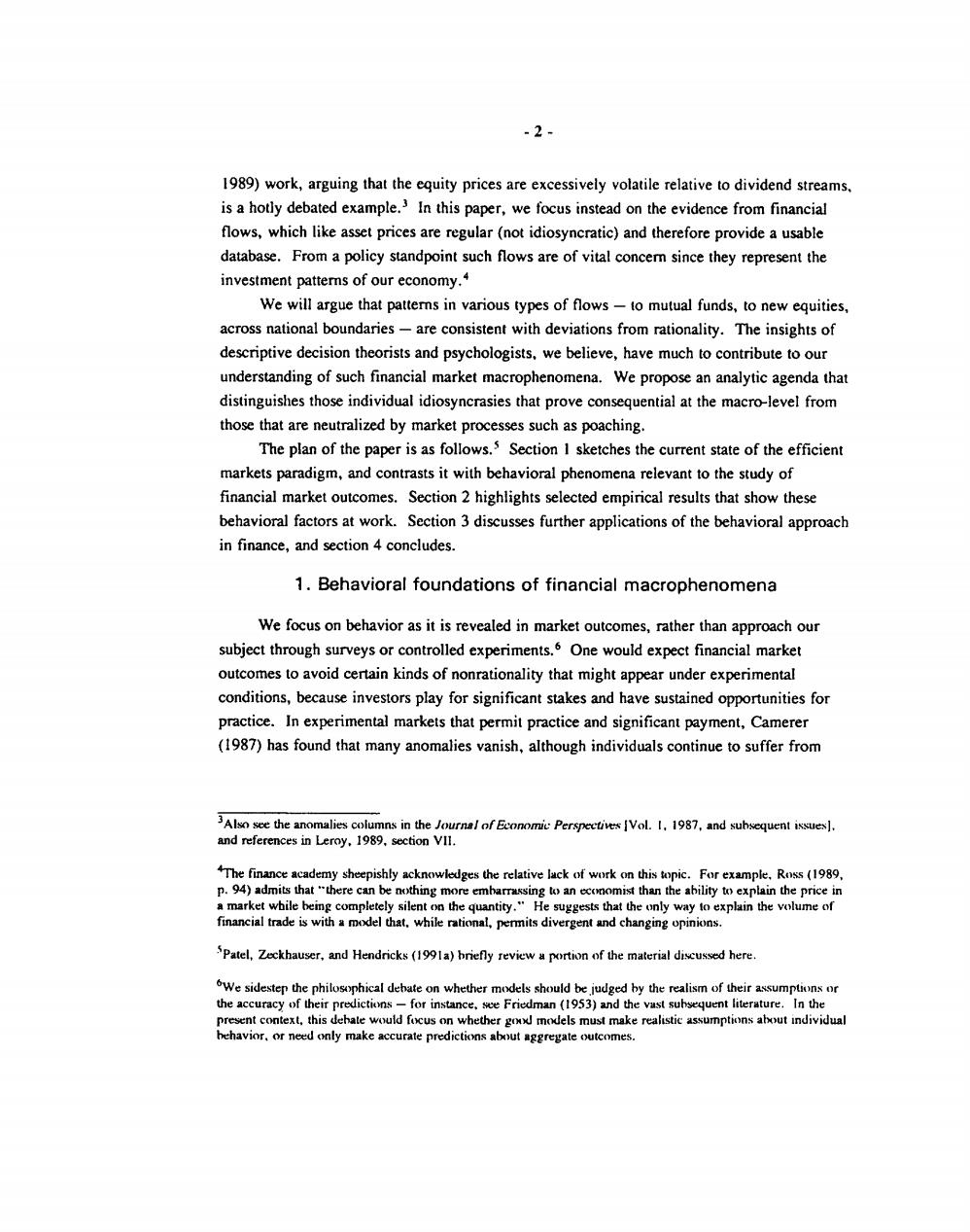正在加载图片...

-2- 1989)work,arguing that the equity prices are excessively volatile relative to dividend streams, is a hotly debated example.3 In this paper,we focus instead on the evidence from financial flows,which like asset prices are regular(not idiosyncratic)and therefore provide a usable database.From a policy standpoint such flows are of vital concem since they represent the investment patterns of our economy.4 We will argue that patters in various types of flows-to mutual funds,to new equities, across national boundaries-are consistent with deviations from rationality.The insights of descriptive decision theorists and psychologists,we believe,have much to contribute to our understanding of such financial market macrophenomena.We propose an analytic agenda that distinguishes those individual idiosyncrasies that prove consequential at the macro-level from those that are neutralized by market processes such as poaching. The plan of the paper is as follows.5 Section I sketches the current state of the efficient markets paradigm,and contrasts it with behavioral phenomena relevant to the study of financial market outcomes.Section 2 highlights selected empirical results that show these behavioral factors at work.Section 3 discusses further applications of the behavioral approach in finance,and section 4 concludes. 1.Behavioral foundations of financial macrophenomena We focus on behavior as it is revealed in market outcomes,rather than approach our subject through surveys or controlled experiments.6 One would expect financial market outcomes to avoid certain kinds of nonrationality that might appear under experimental conditions,because investors play for significant stakes and have sustained opportunities for practice.In experimental markets that permit practice and significant payment,Camerer (1987)has found that many anomalies vanish,although individuals continue to suffer from 3Also see the anomalies columns in the Journal of Economie Perspectives Vol.1,1987,and subscquent issuesl. and references in Leroy,1989,section VIl. The finance academy sheepishly acknowledges the relative lack of work on this topic.For example,Ross (1989. p.94)admits that"there can be nothing more embarrassing to an ecoomist than the ability to explain the price in a market while being completely silent on the quantity."He suggests that the only way to explain the volume of financial trade is with a model that.while rational,permits divergent and changing opinions. SPatel,Zeckhauser,and Hendricks(1991a)briefly review a portion of the material discussed here. we sidestep the philosophical debate on whether models should be judged by the realism of their assumptions or the accuracy of their predictions-for instance.see Friedman (1953)and the vast subsequent literature.In the present context,this debate would focus on whether good models must make realistic assumptions about individual behavior.or need only make accurate predictions about aggregate outcomes